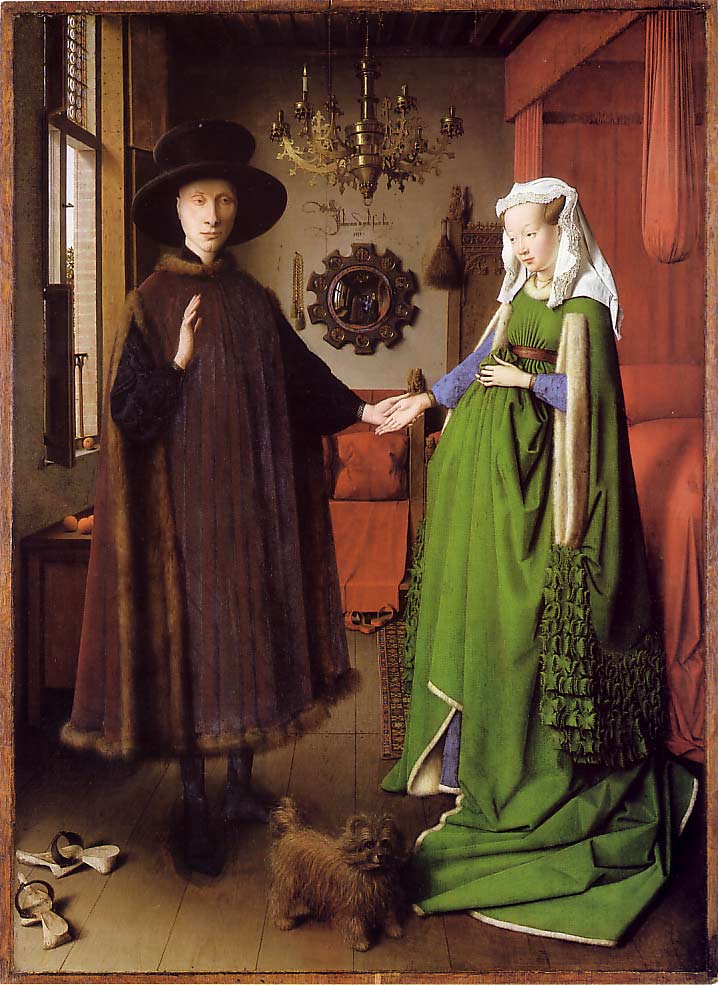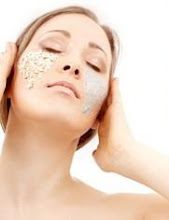
Thursday, June 17, 2010
Thursday, June 10, 2010
Art Students League

So the ASL's policy does not allow its students to use cameras inside the building. You can't photograph during class which is understandable; we have to respect the privacy of the models, however some of the works inside the Red Dot exhibit are phenomenal and I would LOVE to share them with you (if anyone actually reads this blog ;)) They were all done by the students of various departments at the League and they're really worth seeing. I love going to see those exhibits during my break because they're so inspirational and motivate me to work harder so I can eventually get where THEY are. If you would like to check any of them out here's a link to the Art Students League's exhibit section (they're all free of charge and open to everyone)
http://www.theartstudentsleague.org/exhibits.html
Saturday, June 5, 2010
in progress
Jan Van Eyck
(c.1390-1441)
Early Renaissance
c.1390 - Jan Van Eyck is born in Maaseyck near Maastricht
1422 - becomes the court painter at Court Johann III of Holland (The Hague)
1425 - gets employed by Duke Philip the Good of Burgundy
1425 - travels to Italy on a secret diplomatic journey
1426 - Van Eyck's brother dies in Ghent
1428/29 - he travels to Lisbon to paint a portrait of Princess Isabella
1430 - purchases a house in Bruges
1436 - goes on a journey to the Holy Land
1441 - Jan Van Eyck dies on June 23rd in Bruges
Jan Van Eyck was a Dutch master painter. As court painter to Duke Philip the Good, he was appointed to travel to Lisbon to paint a picture of Isabella of Portugal (whom the duke was going to marry). He painted two portraits of the woman depicting all her natural features and therefore making the image very lifelike which was very characteristic of his work. No matter whom he was painting Van Eyck always presented everyone with their assets and flaws - honorable and dignified but having bad skin, point chin, or big nose. He never beautified his subjects. Still, he was commissioned by rich and famous rulers to paint their portraits.
Amazing oil painting technique
The only time when Jan Van Eyck ever focused on the beauty and purity of his subject was in his portrayal of Madonna with her child. His exquisite religious paintings decorate Gothic churches until today. Most artists before Van Eyck had used egg tempera, which although longer lasting, wasn't able to depict the vividness and glow of the glamorous fabrics and expensive garments. Van Eyck, however, mastered the new technique of oil painting. We can confidently say that he was the first Dutch master in realistic oil painting. It allowed him to not only create amazingly realistic portraits of people but also show the fine textures of fabrics and the transparency of various objects. He painted the Ghent Altar with his brother Hubert, who actually started the altar. It was finished by Jan after His brother's death.

Portrait of Arnolfini and his Wife Giovanna Cenami, 1434. Oil on wood, 81.8 x 59.7 cm (32.2 x 23.5 in) National Gallery, London.

Ghent Altar (closed), completed 1432. Tempera & oil on wood. 335 x 229 cm (11 x 7.5 ft) St, Bavo, Ghent.

Ghent Altar (open), completed 1432. Tempera & oil on wood. 335 x 229 cm (11 x 7.5 ft) St, Bavo, Ghent.
Friday, June 4, 2010
Giotto Di Bondone
(c.1267-1337)
High Gothic
c.1267 - Giotto di Bondone is born in Vespignano near Florence
1290 - works as assistant to painter Cimabue in Assisi.
1300 - paints frescoes for the Papal Palace
1302-1305 - paints the Scrovegni Chapel in Padua.
1309 - creates frescoes for the basilica in Assisi.
1310 - starts working in the old St. Peter's in Rome. 1325 - paints the Peruzzi Chapel in the church of Santa Croce in Florence.
1328 - is summoned to Naples by King Robert of Anjou.
1334 - becomes the cathedral architect of Florence.
1337 - Giotto di Bondone dies on January 8 in Florence.
Giotto was a master builder and a painter. He focused mostly on illustrating Bible stories and making his images as realistic as possible using strong, contrasting colors to achieve spatial depth in his frescoes. Unlike other Medieval artists who copied religious figures from books, Giotto used people to model for him (Madonna Ognisanti).
When creating a fresco, the paint is applied to damp plaster made of sand, lime, and marble dust. Giotto plastered as much as he could paint in a day, therefore his frescoes have survived in such great condition throughout the years. Soon Giotto's paintings became very well known in all of Florence and beyond that he needed assistans to meet the demand for his work. He was getting orders from merchants and bankers, but also the Pope and the King of Naples. Enrico Scrovegni called Giotto to Padua to paint his private chapel with forty frescoes that tell the stories of Jesus, Mary, and other Biblical figures.

Rising of Lazarus (1302-05)
fresco.
Arena Chapel, Padua.

The Scrovegni Chapel frescoes (1302-1305)
Padua.

Frescoes from the Chapel -
Expulsion of Joachim from the Temple

Joachim Retires to the Sheepfold

The Annunciation of Anna

The Sacrifice of Joachim

The Vision of Joachim

The Meeting at the Golden Gate

The Birth of the Virgin

The Presentation of the Virgin

The Presentation of the Rods

The Watching of the Rods

The Betrothal of the Virgin

The Virgin's Wedding Procession

God Dispatching Gabriel

The Annunciation

The Visitation
High Gothic
c.1267 - Giotto di Bondone is born in Vespignano near Florence
1290 - works as assistant to painter Cimabue in Assisi.
1300 - paints frescoes for the Papal Palace
1302-1305 - paints the Scrovegni Chapel in Padua.
1309 - creates frescoes for the basilica in Assisi.
1310 - starts working in the old St. Peter's in Rome. 1325 - paints the Peruzzi Chapel in the church of Santa Croce in Florence.
1328 - is summoned to Naples by King Robert of Anjou.
1334 - becomes the cathedral architect of Florence.
1337 - Giotto di Bondone dies on January 8 in Florence.
Giotto was a master builder and a painter. He focused mostly on illustrating Bible stories and making his images as realistic as possible using strong, contrasting colors to achieve spatial depth in his frescoes. Unlike other Medieval artists who copied religious figures from books, Giotto used people to model for him (Madonna Ognisanti).
When creating a fresco, the paint is applied to damp plaster made of sand, lime, and marble dust. Giotto plastered as much as he could paint in a day, therefore his frescoes have survived in such great condition throughout the years. Soon Giotto's paintings became very well known in all of Florence and beyond that he needed assistans to meet the demand for his work. He was getting orders from merchants and bankers, but also the Pope and the King of Naples. Enrico Scrovegni called Giotto to Padua to paint his private chapel with forty frescoes that tell the stories of Jesus, Mary, and other Biblical figures.

Rising of Lazarus (1302-05)
fresco.
Arena Chapel, Padua.

The Scrovegni Chapel frescoes (1302-1305)
Padua.

Frescoes from the Chapel -
Expulsion of Joachim from the Temple

Joachim Retires to the Sheepfold

The Annunciation of Anna

The Sacrifice of Joachim

The Vision of Joachim

The Meeting at the Golden Gate

The Birth of the Virgin

The Presentation of the Virgin

The Presentation of the Rods

The Watching of the Rods

The Betrothal of the Virgin

The Virgin's Wedding Procession

God Dispatching Gabriel

The Annunciation

The Visitation
Subscribe to:
Comments (Atom)




